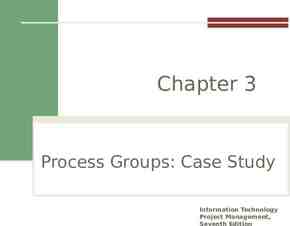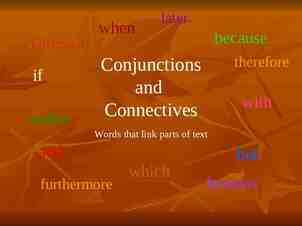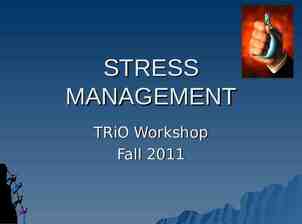Development of secondary education in pre -independence India A power
20 Slides321.64 KB

Development of secondary education in pre -independence India A power point presentation on Secondary Education Paper (PGEDU2E001T) by Dr. Parmod Kumar Department of Educational Studies, Central University of Jammu Email: [email protected] 1

Outline of the Presentation Introduction What is Secondary Education? Importance of Secondary Education Development of Secondary Education in Pre- Independence India: Macaulay’s Minute on Education (1935) Wood’s Despatch (1954) Hunter Commission (1882) Calcutta University Commission (1917-19) Sargent Report (1944) 2

Introduction While primary education is a basic enabling factor for participation, freedom, for leading life with dignity and overcoming basic deprivation, secondary education is the gateway for prosperity, for transforming the economy and establishing social justice in any country. It opens the world of work to the youth of the country and contributes to socio economic development of the community. Secondary Education is a crucial stage in the educational hierarchy as it prepares the students for higher education and also the world of workMinistry of Human Resource Development 3

What is Secondary Education? According to UNICEF, ‘Secondary education is essential for individual children to achieve their full potential, and for nations to advance social and economic development. Secondary education aims to develop the intellectual, social, and moral qualities essential for democratic citizenship, and to prepare young people for entry into the world of work. According to RMSA Framework, 2009, ‘Secondary Education is a crucial stage in the educational hierarchy as it prepares the students for higher education and also for the world of work. Classes IX and X constitute the secondary stage, whereas classes XI and XII are designated as the higher secondary stage.’ 4

Importance of Secondary Education Secondary education develops faculties of critical thinking, abstraction, insight, skills and competence at a higher level Foundation for higher education Development of Democratic Citizenship Development of Capacities to Face new Challenges in life Development of the Self and Personality Education for Modernization Development of Social, Moral and Spiritual Values Development of International Understanding and competitiveness Requirement for employment and labour market quality Critical to social and economic development 55

Development of Secondary Education PreIndependence India According to the Charter of 1813, the British Parliament made the company responsible for education of the Indian people. Clause 43 of the Charter Act of 1813 stated, “It shall be lawful for the Governor General-in-Council to direct that out of any surplus which may remain of the rents, revenues and profits arising from the said territorial acquisitions, after defraying the expenses of the military, civil and commercial establishment and paying the interest of the debt, in manner hereinafter provided, a sum of not less than one lack of rupees in each year shall be set apart and applied to the revival and improvement of literature and encouragement of the learned natives of India and for the introduction and promotion of a knowledge of the sciences among the inhabitants of the British territories in India”. The development of secondary education in pre-independence India is given in the next slides:

1. Macaulay’s Minute on Education (1835) 7

Main Recommendations Resolve the controversy between Anglicists and Orientalists Promote the European Literature Science among the natives of India Promote English Education Encourage Indigenous learning and 8

2. Wood’s Despatch (1854) 9

Cont The despatch observed that "Our attention should now be directed to a consideration, if possible still more important and one which has been hitherto, we are bound to admit, too much neglected, namely, how useful and practical knowledge suited to every station of life, may be best conveyed to the great mass of the people who are utterly incapable of obtaining any education worthy of the name by their unaided efforts; and we desire to see the active measures of Government more especially directed for the future to this object, for the attainment of which we are ready to sanction a considerable increase of expenditure". 10

cont. A department of public instruction should be constituted in each province. Establishment of new Universities Sanskrit, Arabic and Persian should be included in the curriculum along with English, Western literature and science. Along with English, Indian languages should also be accepted as the media of instruction. Expansion of general education Grant-in-Aid for all categories of educational institutions, primary or higher. At least one training college in each province for training of teachers. Recognize the importance of private enterprises in Education Provide Vocational education at school and college level. 11

Some Defects in Secondary Education (during 1854-1882) The mother-tongue was completely neglected as a medium of instruction The course of study became too academic and unrelated to life Lack of teacher training No provision of vocational and technical courses Dominance of Matriculation Examination 12

3. Hunter Commission (1882) Lord Ripon appointed the Indian Education Commission under the Chairmanship of William Hunter. It is popularly known as Hunter Commission. The following instructions regarding Secondary education were given, "The Commission was directed to enquire into the quality and character of the instructions Imparted in schools of this class. The great majority of those who prosecute beyond the primary stage will never go beyond the curriculum of the middle, or at farthest of the high schools. It is therefore of the utmost importance that the education they received should be as thorough and sound as possible. There are grounds for doubting whether there is 'not, in some provinces at any rate, much room for improvement in this respect." 13

Main Recommendations (i) Secondary Education to be provided on the grant-in-aid basis (ii) Diversified courses of instruction in the secondary stage of education (iii)Vocational and Technical Education (iv) Provision of two types of secondary schools i.e. one leading to the entrance examination of the University and the other of a more practical character intended to fit the youth for commercial, vocational and non-literary pursuits. (v) Encouragement of Indigenous Education (vi) Role of Government and Missionary enterprise in Indian Education 14

3. Calcutta University Commission (1917-19) Calcutta University Commission was appointment in 1917 under the Chairmanship of the late Sir Michael Sadler. The commission opined that the improvement of secondary education was essential for the improvement of University education. Some important recommendations: (i) Proper division between the University and Secondary courses (ii) Open new type of institutions i.e. intermediate colleges 15

cont. (iii) These colleges run as independent institutions or might be attached to selected high schools. (iv) The admission test for Universities should be the passing of the intermediate Examination. (v) A Board of Secondary and Intermediate Education consisting of the representatives of Government, University, High Schools and Intermediate colleges to be established and entrusted with the administration and control of Secondary Education. 16

5. Sargent Report (1944) In 1944, the Central Advisory Board of Education was set up by the Government of India and submitted a comprehensive Report on Post-War Educational Development. The report is popularly known as the Sargent Report (under the Chairman of Sir John Sargent). Main recommendations: (i) Visualised a system of universal, compulsory and free education for all boys and girls between the age of 6 to 14 years (ii) The Senior Basic or the Middle School should be final stage in the school system 17

Cont (iii) Provision of variety of courses at the Middle School stage (iv) Prepare the pupils for Industrial and Commercial occupations (v) Open two types of High Schools i.e. Academic and Technical. (vi) Provision of good all-round education 18

Conclusion Thus, it may be concluded that a number of commissions/committees had been constituted before independence for the development of secondary education in India and quite many recommendations were given by these commissions/committees regarding various aspects of secondary education. But these recommendations were not implemented with zeal and enthusiasm in the field of secondary education. During that period, there were various defects in secondary education i.e. the education was too bookish and mechanical, stereotyped and rigid, there was stress on examinations, and did not cater to the need of the various types of pupils. The standards of discipline became deplorable during that period and a special effort needs to be made to improve the19

References Dash, B.N. (2011). History of Education in India. New Delhi: Dominant Publishers and distributed Pvt. Ltd. Jena, S.S., Aggarwal, K. & Mahapatra, S.K. (2014). Quality in school education: Issues & Concerns. New Delhi: Shipra Publications. Aggarwal, J.C.(2010). Landmarks in the History of Modern Indian Education. Delhi: Vikas Publishing House Pvt. Ltd. Web source: www.teindia.nic.in/Files/./ Secondary Education Commission Report.p . www.teindia.nic.in/files/reports/ccr/KC/KC V1.pdf . www.mhrd.gov.in Documents: Mudaliar Commission Report (1953). Report of the Secondary Education Commission. Ministry of Education: Govt. of India. 20






